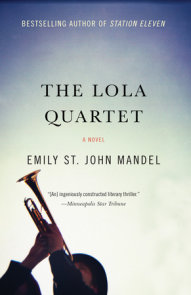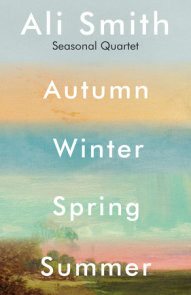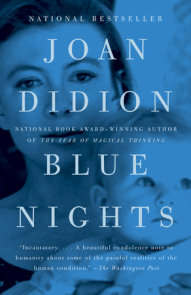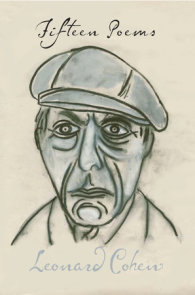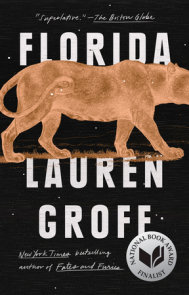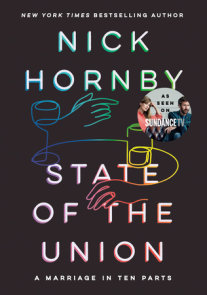READERS GUIDE
Questions and Topics for Discussion
INTRODUCTION
“My Year of Meats. It changed my life. You know when that happens—when something rocks your world, and nothing is ever the same after?”
When Jane Takagi-Little, an unemployed Japanese-American documentary filmmaker, answers the phone at two in the morning, her life is forever altered. She accepts a job working on My American Wife!, a Japanese television show sponsored by an American national lobby organization that represents American meats of all kinds—beef, pork, lamb, goat, and horse, just to name a few. In the early-morning hours, wrapped in a blanket and huddled over her computer keyboard, Jane writes a pitch for the new program: “Meat is the Message. . . .It’s the meat (not the Mrs.) who’s the star of our show! She must be attractive, appetizing, and all-American. She is the Meat Made Manifest: ample, robust, yet never tough or hard to digest.” And so Jane, a self-described polyracial prototype, embarks on her year of meats, zigzagging across the country in search of healthy American wives.
Akiko Ueno, the bulimic Japanese wife of the executive who hatched the My American Wife! concept, lives an ocean away. She is thin, so thin that her bones hurt, so thin that her periods have stopped. If only she would eat more meat, her husband thinks, surely she would become “ample, robust, yet never tough or hard to digest,” much like the Texas women that he is so fond of. And so Akiko Ueno tunes in to My American Wife! every week, trying desperately to cook and consume delicious dishes, like Coca Cola Roast and Beef Fudge, that she learns from watching the American wives. Although Jane and Akiko are brilliant counterpoints—Jane’s first-person narrative lends the novel its funny and candid tone while Akiko’s eventual triumph is a poignant reminder that a frail body can house the fiercest of spirits—Jane encounters a host of other extraordinary characters as she scours our nation’s freezer sections and Wal-Marts in search of subjects for her programs. She learns to two-step from Alberto and Catalina Martinez, who emigrated to Texas so that their son could be born an American citizen. She joins Vern and Grace Beaudroux at the annual pig festival in Askew, Louisiana, and meets their family of twelve—ten of whom are adopted Asian children. Miss Helen Dawes invites her to a rousing prayer service in Harmony, Mississippi, where she learns that chicken can be a dangerous delicacy. In Quarry, Indiana, the male members of Jane’s video crew are enchanted by an ethereal and radiantly beautiful teenager named Christina Bukowsky, whose legs were crushed by a container truck. While in Massachusetts, Lara and Dyann, a lesbian vegetarian couple living with their children—perhaps the unlikeliest candidates for My American Wife!—create the most honest installment of Jane’s program.
All of these characters are embedded in the terrain of America—and the text of the novel—like unique jewels. Each is different, yet none is less captivating than another. And as Jane, much to the chagrin of the Japanese production company, detonates stereotypes by incorporating these quirky, unforgettable characters into My American Wife!, a central theme of the novel begins to crystallize—that of authenticity. Are “authentic” American wives really the “ample, robust, yet never tough or hard to digest” middle-class white Americans that Beef-Ex wants to offer up to the Japanese TV audience? Ruth Ozeki paints a world where wives are “meat made manifest,” where, according to the Beef-Ex hierarchy of meats, “pork is possible but beef is best,” and with this type of metaphorical play, she deftly yet relentlessly teases out our own preconceptions and misconceptions about culture, gender, and race.
With the roving, probing eye of a filmmaker, Ozeki brings into sharp focus a myriad of other issues that have defined this decade: spousal abuse, eating disorders, and safe sex, to name just a few. Jane’s affair with the enigmatic saxophonist Sloan provides a lens through which to explore the often ambiguous, confounding nature of modern-day relationships. When Jane realizes that she wants Sloan at the center of her life, rather than “orbiting its periphery like a spare moon,” even the stealthiest emotional navigating cannot prevent her from allowing fear of intimacy and a series of misunderstandings to railroad—if only temporarily—their relationship.
Of course, no discussion of My Year of Meats would be complete without a word about food safety and the use of hormones in the meat industry. We learn that ninety-five percent of American cattle are routinely fed “growth-enhancing” drugs, and that trace residues of these drugs, as well as herbicides, pesticides, and insecticides, end up in the beef that we eat. This information is as integral to the plot as it is to Jane’s well-being, and here the story unfolds like an industrial thriller as these larger social issues start to dovetail and resonate with the most intimate parts of the women’s lives. Jane discovers that in her mother’s womb she was exposed to DES, a hormone mistakenly prescribed to prevent miscarriages, and now she suffers reproductive disorders as a result. She subsequently realizes that she is pregnant, and ironically, as her fetus grows, she craves more beef.
Determined to learn more, Jane visits Dunn & Son, Custom Cattle Feeders, where she meets the family: Bunny, a former stripper and rodeo queen; her elderly husband, John, who proposed to Bunny during a lap dance; Gale, his “pale, flaccid” son from a previous marriage; and John and Bunny’s five-year-old daughter, Rose. The tour that Jane takes of a neighboring slaughterhouse, and the subsequent revelation that Rose—so poisoned by growth hormones that at five years old her body has matured into that of a grown woman—represent the darkest regions of the novel. Perhaps the secret poisoning of our food supply is one of the true evils of the world, but even more frightening is this: How can citizens of America, and of the world, address evils of which they may not be aware?
In My Year of Meats, Ruth Ozeki does not presume to have the answer to this question, nor does she attempt to shepherd readers through the rough terrain of love and happiness at the cusp of the millennium. Rather, she invites them to revel in the fumbling, imperfect—yet endearing—qualities of human nature.
And as for coping with the evils lurking not only within the human heart, but also beneath the cellophane packing of beef in the freezer section, one might best look to Jane Takagi-Little for guidance: “I don’t think I can change my future simply by writing a happy ending,” she says. “That’s too easy and not so interesting. I will certainly do my best to imagine one.”
ABOUT RUTH OZEKI
Ruth Ozeki was born and raised in New Haven, Connecticut, by an American father and a Japanese mother, both of whom taught at Yale University. She graduated summa cum laude from Smith College with degrees in English Literature and Asian Studies, received a Japanese Ministry of Education fellowship, and emigrated to Japan to do graduate work in classical Japanese literature at Nara Women’s University. She worked at Kyoto Sangyo University, and in 1985, she returned to the States and gave up teaching for a short, but distinguished career as production designer for low-budget horror movies. By 1987, she switched genres to Japanese television.
Ozeki has directed and produced a large number of documentary-format programs for network television. Her first independent narrative film, Body of Correspondence, was the winner in the New Visions category at the 1995 San Francisco Film and Video Festival, was screened at the Sundance Festival and on PBS. Her second independent and first feature-length film, Halving the Bones, traced her mother’s Japanese roots and offered an exotic portrait, partly factual and partly speculative, of her maternal grandparents and their lives in Hawaii. The film aired at the Museum of Modern Art in New York, the 1996 Asian American Film Festival in San Francisco, the 1996 Sundance Film Festival, and many other venues, as well as being shown on PBS.
Currently Ruth is working on a second novel, and divides her time between New York City and an island off the coast of Vancouver, British Columbia.
A CONVERSATION WITH RUTH OZEKI
What inspired you to write a novel about the meat industry?
Actually, it never occurred to me to write a novel about the meat industry. I started out writing a novel about a woman who makes television, specifically, Japanese TV documentaries about American life. I’d worked in this small niche of the media industry for eight or nine years, and during that time, it always struck me that the funniest, most interesting, most tragic, and most culturally profound interactions always happened either behind the camera or when the camera was turned off. I hate wasting good narrative and am an archivist at heart, so I decided to record some of the anecdotes. I started with the scene of Suzuki and Oh in the motel room shooting out the Hustler magazine pin-ups with a Wal-Mart air gun, and before I knew it I’d stumbled upon a first-person narrative voice that was strong enough, and had enough to say, to sustain a novel.
So my initial impulse was purely anecdotal; the novel’s primary theme, that we live in a world where culture is commerce and where global miscommunication is mediated by commercial television, grew from the very specific escapades of the narrator, Jane. The meat was metaphorical, a gag, if you will. As Jane and her crew embarked on a road trip to make a cooking show featuring rural American housewives (I’d done a similar kind of show myself and found it rich in narrative episode), meat took on a variety of metaphorical resonance: I was thinking of women as cows; wives as chattel (a word related to cattle); and the body as meat, fleshy, sexual, the irreducible element of human identity. I was thinking, too, of television as a meat market, and Jane as a cultural pimp, pandering the physical image of American housewives to satisfy the appetites of the Japanese TV consumers. And thus Beef-Ex was born as the sponsor of Jane’s TV show.
The issue of commercial sponsorship had always been a concern of mine. Like Jane, I had made programs sponsored by industries I didn’t quite approve of, in particular, Philip Morris, the tobacco corporation. At the time, I was very aware of the way that the content of our programs was being impacted by our sponsor’s commercial message: for example, in every show we were required to include one shot of a person enjoying the sponsor’s product. At a time when I was desperately trying to quit smoking myself, I’d walk around the streets of New York with my video crew, pockets stuffed with Marlboros and lighters, plying people on the street with cigarettes and begging them to smoke for us so we could film our “smoking cut.” I was aware of a certain hypocrisy in this. So when I chose the meat industry as the sponsor in the novel, it only made sense to investigate how meat could impact the physical body of my character. You are what you eat, right? I was already several hundred pages into the novel when I realized I needed to take the meat issue more seriously. I started doing research on the industry, and I was pretty appalled at what I found out. I fed this information to Jane, who acted upon it, and this is how the plot of the novel developed. With each bit of research, the plot took another twist or turn, building in speed and intensity until the story found its end, and as I was writing, I was carried along by this momentum. It was the most exciting sensation of uncovering, of exploration and discovery, and this is what makes the novel a bit of a page-turner. Jane’s process of discovery mirrors mine, the reader’s process mirrors Jane’s. I have an entry in my journal that reads, “Oh my god, I’m writing a thriller!”
Of course, the climax occurred when I came across the information that the synthetic hormone D.E.S. had a history of misuse, as not only as a pregnancy drug for women, but as a growth stimulant for cattle. Suddenly the metaphor was no longer simply a literary conceit. It was frighteningly real: women weren’t just like cows; women and cattle were being given the identical drug, with equal disregard for safety. I realized then that Jane was a D.E.S. daughter, and it was a moment of exquisite and horrifying resonance.
My Year of Meats dips into a wide variety of serious issues: the role of women in America and Japan, stereotypes, racism, relationships, artistic freedom, and, of course, the meat industry. Were you concerned that it would become a “novel of causes,” or that the evils being exposed would overpower the characters?
I was not fully aware of the “issues” or “causes” until the first marketing meeting for the book, so no, I was not concerned that it would become a “novel of causes.” My characters live in their world, a universe, parallel to ours, where serious “issues” may constitute the meat and the gristle of their lives, but they do not identify their problems as “causes,” and neither did I.
But your question is interesting so I’ll turn it around: What is it that frightens us about a “novel of causes,” and conversely, does fiction have to exist in some suspended, apolitical landscape in order to be literary? Can it not be politically and temporally specific and still be in good literary taste? We are leery of literature that smacks of the polemic, instructional, or prescriptive, and I guess rightly so—it’s a drag to be lectured to—but what does that imply about our attitudes toward intellectual inquiry? While I enjoy reading kitchen-table novels in which characters are distilled to their emotional essence and their lives stripped of politics and commerce, it simply is not reflective of my experience. I see our lives as being a part of an enormous web of interconnected spheres, where the workings of the larger social, political, and corporate machinery impact something as private and intimate as the descent of an egg through a woman’s fallopian tube. This is the resonance I want to conjure in my books.
I want to write novels that engage the emotions and the intellect, and that means going head to head with the chaos of evils and issues that threaten to overpower us all. And if they threaten to overpower the characters, then I have to make the characters stronger.
Jane Smiley described My Year of Meats as a “comical-satirical-farcical-epical-tragical-romantical” novel. Beginning with quotations from Sel Shonagon’s The Pillow Book, peppered with faxes and memos, and ending with a documentary-like description of a slaughterhouse, your novel does indeed seamlessly combine several different genres. Is this how you originally envisioned the narrative, or, as you began writing, did the story and characters simply begin to outgrow a straight, linear structure?
Maybe it’s because I’m like Jane, racially halved and “neither here nor there,” but I’ve always been suspicious of binary oppositions—comedy and tragedy, documentary and drama, fact and fiction—so I guess it makes sense that I’d write a transgressive, genre-bending novel. It’s an outgrowth of my independent film work, too. I’ve made two movies, Body of Correspondence and Halving the Bones. The first is a drama with documentary aspirations, and the second is a documentary with fictional lapses. Both rely heavily on montage in their construction, something you can see in My Year of Meats, in the use of faxes, memos, quotations from newspapers, from eighth-century Japanese court diaries.
The juxtaposition of first-person and third-person narrative voices is another transgression of sorts. As a former documentary filmmaker, this question of voice and point of view is interesting on several levels, not the least of which is the effect of extreme subjectivity on notions of absolute or objective truth. Of course, this is a topic that Jane discusses quite overtly in the novel, and that forms its thematic underpinnings.
It sounds coherent now but it wasn’t. It’s certainly not something I planned to do in advance. I’d describe the process as organic, with one part growing willy-nilly out of another.
“On the whole I concentrated on things and people and observations on trees and plants, birds and insects. I was sure that when people saw my book they would say, ‘It’s even worse than I expected. Now one can really tell what she is like.’ After all, it is written entirely for my own amusement, and I put things down exactly as they came to me.” This is a quote from Shonagon’s The Pillow Book that appears on the first page of the novel. Does this quote mirror any of your own anxieties about sending your first book to the printer? Are you surprised by the critical acclaim that it’s received?
This was a tongue-in-cheek reference, a way of alerting the reader to the potential unreliability of author/narrators. The quote continues at the end of the book, when Shonagon asserts, “I wrote these notes at home, when I had a good deal of time to myself and thought no one would notice what I was doing. Everything that I have ever seen and felt is included. . . . Whatever people may think of my book, I still regret that it ever came to light.” Jane then attacks Shonagon’s stance, calling it falsely modest, and goes on to proclaim her own determination to bring her stories to light, unflinchingly. Of course, that is Jane. Who is different than me. I flinch. And yes, I was stunned at the acclaim, both national and international. Honestly, you write something, you inhabit your world for a year or ten or however long it takes, and then it’s over and you simply cannot imagine why anyone else would be interested. And then, miraculously, they are.
There are two very distinct parallels between yourself and Jane—you’re both filmmakers and you’re both of mixed heritage. Do the similarities stop there? How about Akiko? What part of her character did you relate to the most?
Jane is my extroverted self and our exterior identities and experiences of the world have much in common. But Akiko is my little introvert. I suspect I was more like her when I was younger and less able to recognize or harness my strength, and often turned it against myself as a result.
How would you respond to a reader that says that Joichi Ueno’s character is one-dimensional?
I’d agree that he is perhaps more simply depicted than Jane and Akiko, but then maintain that he is not a point-of-view character and the book isn’t really about him. One thing that has surprised me is that some readers feel so little empathy for him. Sure, he is the villain of the book, but he is a sad man, too. He is caught between a rock and a hard place, between his American bosses and Japanese corporate culture on one hand, and two highly subversive women on the other. He feels extreme rage and he has a substance-abuse problem; he handles himself very badly. I think his position is interesting, compromised, and one I can relate to.
Is this your first endeavor into fiction?
No. As I mentioned, I’ve made two films, both of which have trodden into fictional realms before, and all through school and college I wrote short stories. In fact, as a child, the first thing I remember ever wanting to be was a novelist. The filmmaking was a bit of a detour.
How has your experience as a filmmaker influenced your work as a writer? Has your film background influenced your work as a writer? Do you prefer one medium over the other? If so, why?
I’ve talked about montage as a technique I started using in film. I should mention that I used montage because it can be done cheaply, my aesthetic vision being largely determined by economic constraints. This is what I find most liberating about writing, the fact that I can produce an entire novel on a ream of paper for under five dollars, and if the paper is recycled, I don’t even have to feel bad about wasting the trees. You’d be hard-pressed to produce even a minute of film on a budget like that. I love the lightness and freedom of the written word, the absence of physical constraints. You can travel to the moon or circle the planet, write a scene in a suburb of Tokyo, then flip back to Bald Knob, Arkansas. And if you forget to write a scene, or think up another, you can blink your eye and just do it. When I started the novel, I felt like I’d stepped off a skyscraper and realized I could fly. In comparison, filmmaking feels like taking a walk in a swamp with shackled ankles. Writing is portable and doesn’t require a large amount of heavy equipment. You don’t have to feed a crew, or find bathrooms for them. You don’t have to make compromises with collaborators. You can have complete artistic control.
Still, I learned an awful lot from making films. Readers say My Year of Meats is cinematic, which makes sense to me. When I write, I feel like a virtual camera, moving into a location, panning around, choosing a frame, then starting to record. When I used to write, back in school, I never was very good at moving a story quickly and efficiently through time. Chronology defeated me. But after learning how to edit visuals in a time-based medium, suddenly I understood how to make the segues and transitions work, how to cut from a wide establishing shot to a close-up, for example, or how to move inside a character’s head. Additionally, I think filmmaking is the best training in discipline and stamina one can receive. All in all, I don’t think I could have written a novel had I not been a filmmaker first.
What are you working on right now?
I’m working on another novel. I used to talk about new projects but I’ve stopped doing that because until you choose to make them public, they are very private things.
At the end of the novel, Jane says, “I don’t think I can change my future simply by writing a happy ending. That’s too easy and not so interesting. I will certainly do my best to imagine one, but in reality I will just have to wait and see.” For the most part, the characters in My Year of Meats do, in the end, get what they want, what they need, or in the case of John Ueno, what they deserve. Will you elaborate on why you decided to write a happy ending?
Jane needs hope. As a D.E.S. daughter there is still a chance that she might develop cancer, and she acknowledges this. What’s important here is her awareness that although writing a happy ending might not change the future, it is still important to imagine one. She says, just prior to the section you quote, “In the Year of Meats, truth wasn’t stranger than fiction; it was fiction. . . . Maybe sometimes you have to make things up, to tell truths that alter outcomes.” Without the power of the imagination we lack the power to alter outcomes, so if we can’t imagine better outcomes in a better world, we cannot act to achieve these. You can’t make something you can’t imagine first.
As the author, I wrote a happy ending, although, like Jane, I am suspicious of the efficacy of doing so. But happy endings satisfy the emotions, and I wanted to provide that type of satisfying narrative closure in the hope that it would free the intellect to continue its trajectory beyond the story line, pondering the issues the book raises.
At the same time, by having Jane discuss the shortcomings of happy endings right smack in the middle of one, I was hoping to invite the reader into a more complex relationship with that ending. In essence, I point an authorial finger at the very thing that I am writing, and poke a hole in the seamlessness of the happy ending by making it self-referential and reflexive. Ironic.
In the end, though, it is a tribute to the power of the imagination. You cannot make a better world unless you can imagine it so, and the first step toward change depends on the imagination’s ability to perform this radical act of faith. I guess I see writing as a similar endeavor.
In the end, though, it is a tribute to the power of the imagination. You cannot make a better world unless you can imagine it so, and the first step toward change depends on the imagination’s ability to perform this radical act of faith. I guess I see writing as a similar endeavor.
DISCUSSION QUESTIONS











